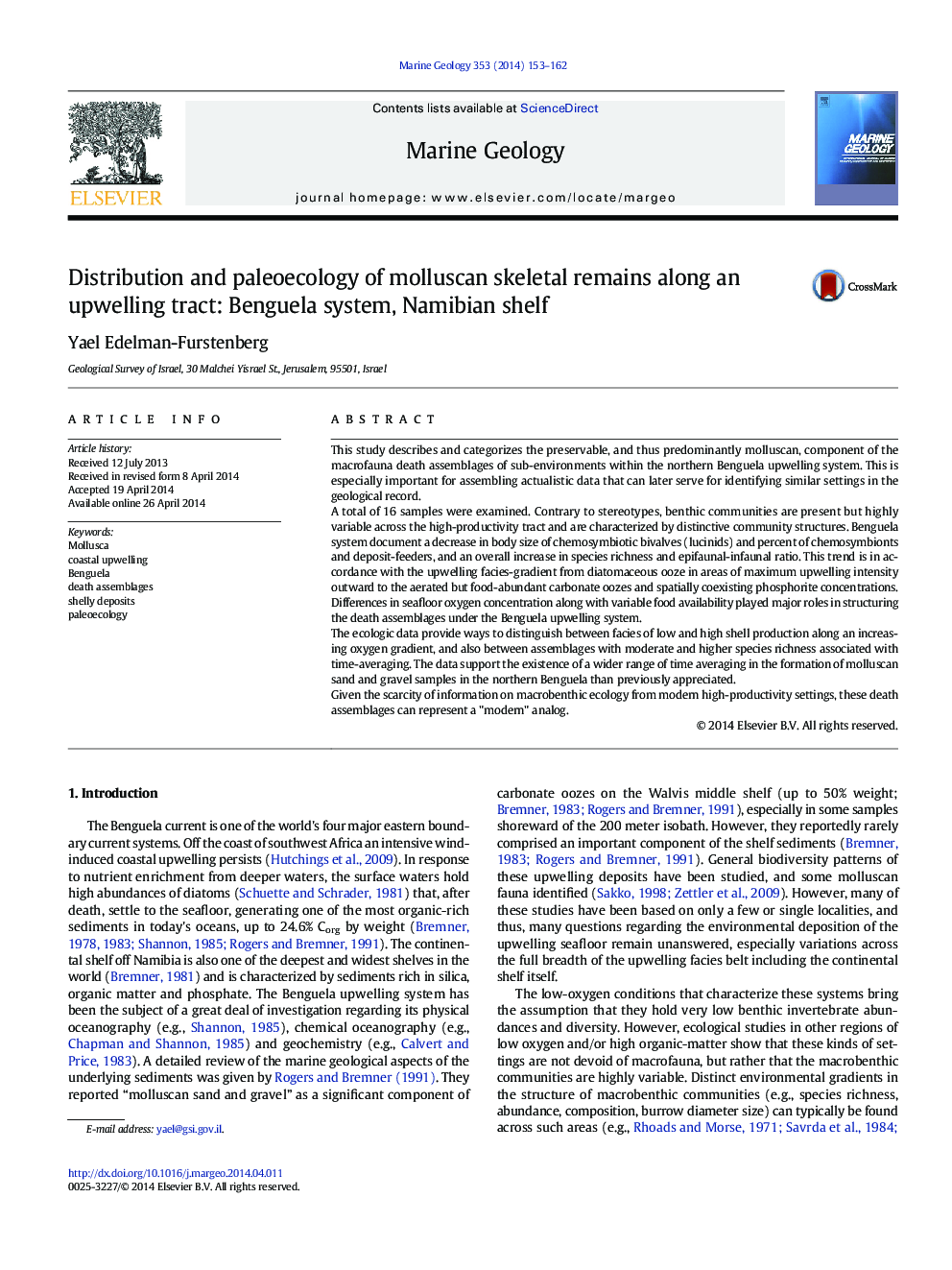| کد مقاله | کد نشریه | سال انتشار | مقاله انگلیسی | نسخه تمام متن |
|---|---|---|---|---|
| 4718301 | 1639099 | 2014 | 10 صفحه PDF | دانلود رایگان |
• Upwelling cell margins comprise of interfingering carbonate and phosphate sediments.
• Lucinoma abundance indicates habitat of assemblages prior to taphonomic processes.
• Benthic molluscan community structure is highly variable across the upwelling tract.
• Molluscan death assemblages can represent a "modern" analog for ancient upwelling.
This study describes and categorizes the preservable, and thus predominantly molluscan, component of the macrofauna death assemblages of sub-environments within the northern Benguela upwelling system. This is especially important for assembling actualistic data that can later serve for identifying similar settings in the geological record.A total of 16 samples were examined. Contrary to stereotypes, benthic communities are present but highly variable across the high-productivity tract and are characterized by distinctive community structures. Benguela system document a decrease in body size of chemosymbiotic bivalves (lucinids) and percent of chemosymbionts and deposit-feeders, and an overall increase in species richness and epifaunal-infaunal ratio. This trend is in accordance with the upwelling facies-gradient from diatomaceous ooze in areas of maximum upwelling intensity outward to the aerated but food-abundant carbonate oozes and spatially coexisting phosphorite concentrations. Differences in seafloor oxygen concentration along with variable food availability played major roles in structuring the death assemblages under the Benguela upwelling system.The ecologic data provide ways to distinguish between facies of low and high shell production along an increasing oxygen gradient, and also between assemblages with moderate and higher species richness associated with time-averaging. The data support the existence of a wider range of time averaging in the formation of molluscan sand and gravel samples in the northern Benguela than previously appreciated.Given the scarcity of information on macrobenthic ecology from modern high-productivity settings, these death assemblages can represent a "modern" analog.
Journal: Marine Geology - Volume 353, 1 July 2014, Pages 153–162
